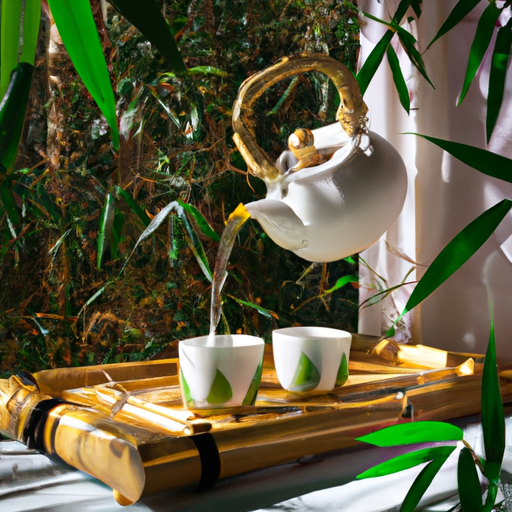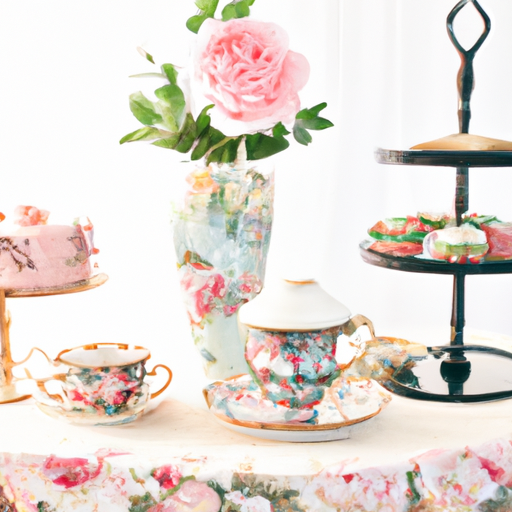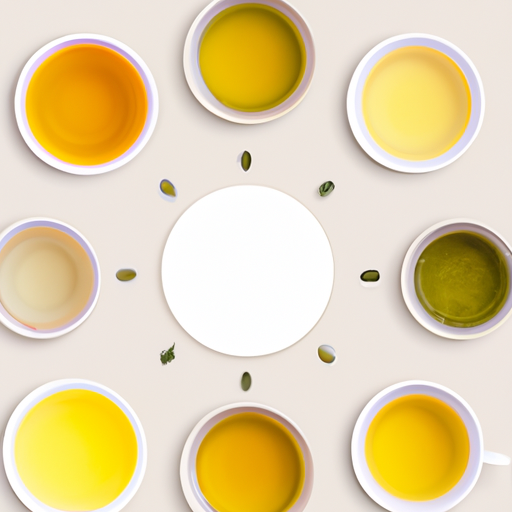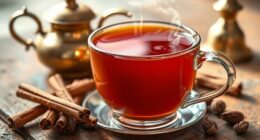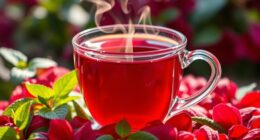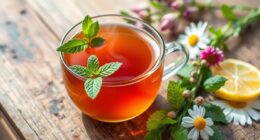Do you crave a soothing cup of green tea that is steeped to perfection? Look no further! Welcome to the world of the art of brewing green tea, where the flavors, temperatures, and tips collide to create the perfect cup.
As an avid tea enthusiast, I have delved deep into the secrets of this ancient ritual, and I am here to share my expertise with you.
Green tea, with its complex blend of catechins, tannins, amino acids, and volatiles, offers a unique and refreshing taste. However, to unlock its full potential, one must master the brewing techniques.
Each type of green tea requires specific temperatures and brewing times, such as the Japanese sencha brewed at 176 °F or the Chinese pan-fired teas at 176 °F for a shorter duration.
But that’s not all! Preheating teaware, using fresh spring water, and selecting the right brewing vessel are essential elements. So, grab your dedicated teapot, embrace the elegance of glass or glazed ceramics, and bid farewell to paper filters or old strainers.
Remember, adjusting the brewing temperature and avoiding over-brewing are crucial to preventing bitterness. And fear not if you accidentally steep it for too long, for there are ways to salvage the experience.
So, join me on this journey as we explore the art of brewing green tea, unraveling its flavors, perfecting its temperatures, and uncovering invaluable tips to elevate your tea-drinking experience. Get ready to savor the delicate nuances and embrace the tranquility that comes with a well-brewed cup of green tea.
Key Takeaways
- Different types of green tea require different brewing temperatures and times.
- Preheating teaware and using the appropriate teapot are important for brewing green tea.
- Fresh spring water is ideal for brewing green tea.
- Avoid over-brewing green tea to prevent bitterness and astringency.
How to Brew Green Tea
I recommend using a dedicated teapot and preheating the teaware to ensure the best results when brewing green tea. Different brewing methods can affect the flavor of green tea, so it’s important to choose the right one for your desired taste.
Brewing temperature and time also play a crucial role in bringing out the flavors of green tea. It’s essential to follow the instructions on the tea package to adjust the brewing temperature accordingly.
Green tea offers numerous health benefits, including its high antioxidant content, which helps protect the body against damage from free radicals. It also contains compounds like catechins, which have been linked to potential health benefits such as improved heart health and weight management.
Incorporating green tea into your daily routine can be a great way to enjoy its flavors and reap its potential health benefits.
Types of Green Tea
Types of green tea
Sencha, pan-fired, gyokuro, jasmine, and hojicha are just a few examples of the diverse types of green tea. Each type has its own distinct flavor profile and brewing requirements.
Different brewing methods can bring out the best in each type of green tea. For example, Japanese sencha should be brewed at a lower temperature for a shorter time to preserve its delicate flavors, while Chinese pan-fired teas benefit from a slightly higher temperature for a longer steeping time. Gyokuro, on the other hand, is best brewed at cooler temperatures to bring out its unique umami taste.
In addition to their varied flavors, green teas also offer numerous health benefits. They are rich in antioxidants, such as catechins, which have been linked to reduced risk of heart disease and certain types of cancer. Green tea also contains caffeine and L-theanine, which can improve focus and alertness without causing jitters. Regular consumption of green tea may also help boost metabolism and aid in weight loss. However, it’s important to note that the benefits of green tea can vary for each individual. It’s always best to consult with a healthcare professional for personalized advice.
Brewing Techniques and Tips
When brewing green tea, it is important to adjust the steeping time and temperature according to the specific type of tea being brewed. The flavor of green tea can be influenced by various factors, including the brewing equipment used and the brewing parameters. To help you brew the perfect cup of green tea, here are some tips and techniques to consider:
-
Green Tea Brewing Equipment:
- Use a dedicated teapot or teacup for green tea.
- Opt for glass or glazed ceramics teaware for delicate green tea leaves.
- Preheat your teaware to ensure optimal brewing temperature.
-
Factors Affecting Green Tea Flavor:
- Brewing temperature: Different types of green tea require specific brewing temperatures.
- Brewing time: Adjust the steeping time based on the tea package instructions.
- Tea-to-water ratio: Use at least 2-3 grams of tea per cup of water.
Remember, brewing green tea is an art that requires attention to detail. By following these tips and techniques, you can enhance the flavor and enjoy a delightful cup of green tea.
Frequently Asked Questions
Does the type of water used affect the taste of green tea?
Yes, the type of water used can greatly impact the taste of green tea. Water quality, specifically the temperature, affects the extraction of compounds in the leaves, resulting in different flavors and aromas.
Can green tea be brewed using a coffee maker or French press?
Green tea can be brewed using a coffee maker or French press. However, it is not the ideal method as the temperature and steeping time may not be optimal. This can result in a different flavor profile.
Is it necessary to rinse the tea leaves before brewing green tea?
Rinsing tea leaves before brewing green tea is not necessary. It can remove some bitterness, but also washes away beneficial compounds. Best brewing techniques for green tea include using the recommended temperature and steeping time.
Can green tea be sweetened with sugar or other sweeteners?
Yes, green tea can be sweetened with sugar or other sweeteners. However, it is important to consider the health benefits and pros and cons. Exploring different flavor combinations and pairings can enhance the overall experience of drinking green tea.
Does the brewing time of green tea affect its caffeine content?
Yes, the brewing time of green tea does affect its antioxidant content. Longer brewing times extract more catechins, which are antioxidants. However, over-brewing can also lead to bitterness and astringency.
Conclusion
In conclusion, brewing the perfect cup of green tea is truly an art form. By understanding the flavors, temperatures, and tips involved, one can unlock the full potential of this delicate beverage.
Just like a skilled artist, a tea enthusiast must carefully select the right type of green tea and brew it at the appropriate temperature and time. By following these techniques and tips, one can savor the exquisite flavors and aromas that green tea has to offer.
So, let’s embark on this flavorful journey and let the art of brewing green tea awaken our senses.

